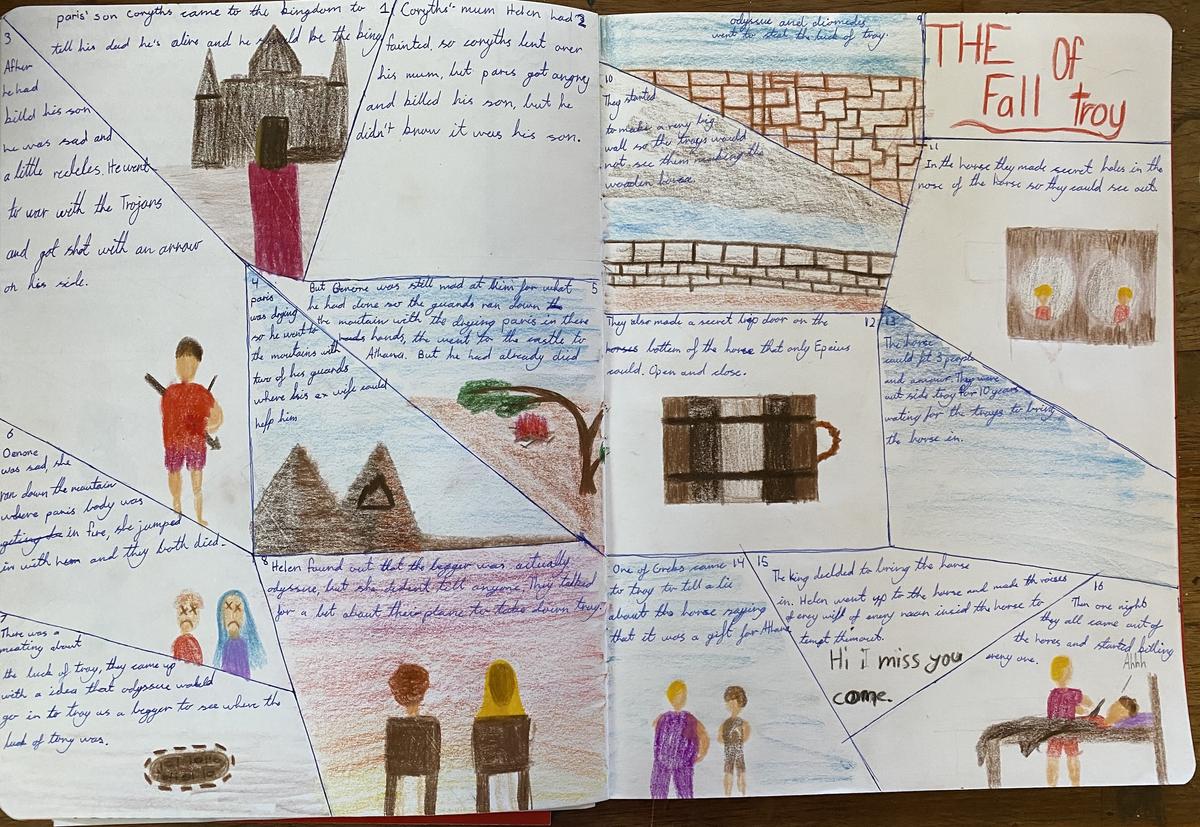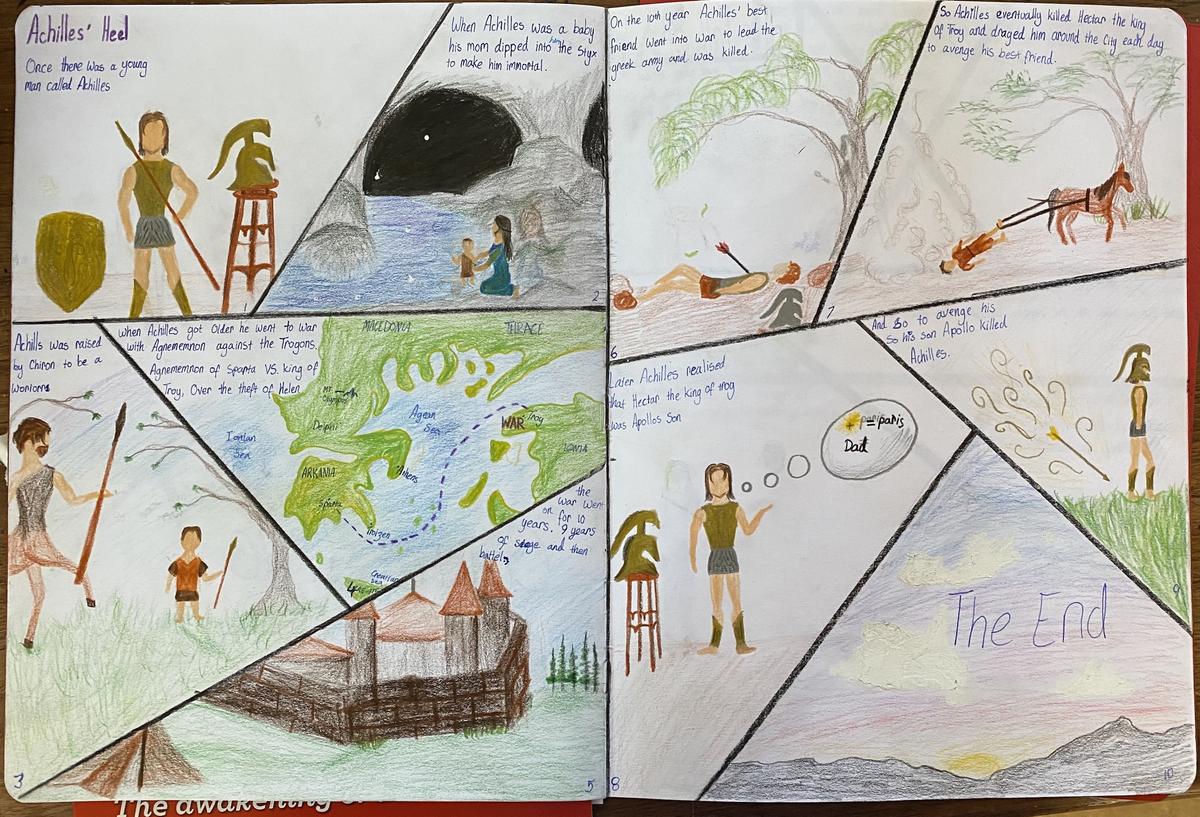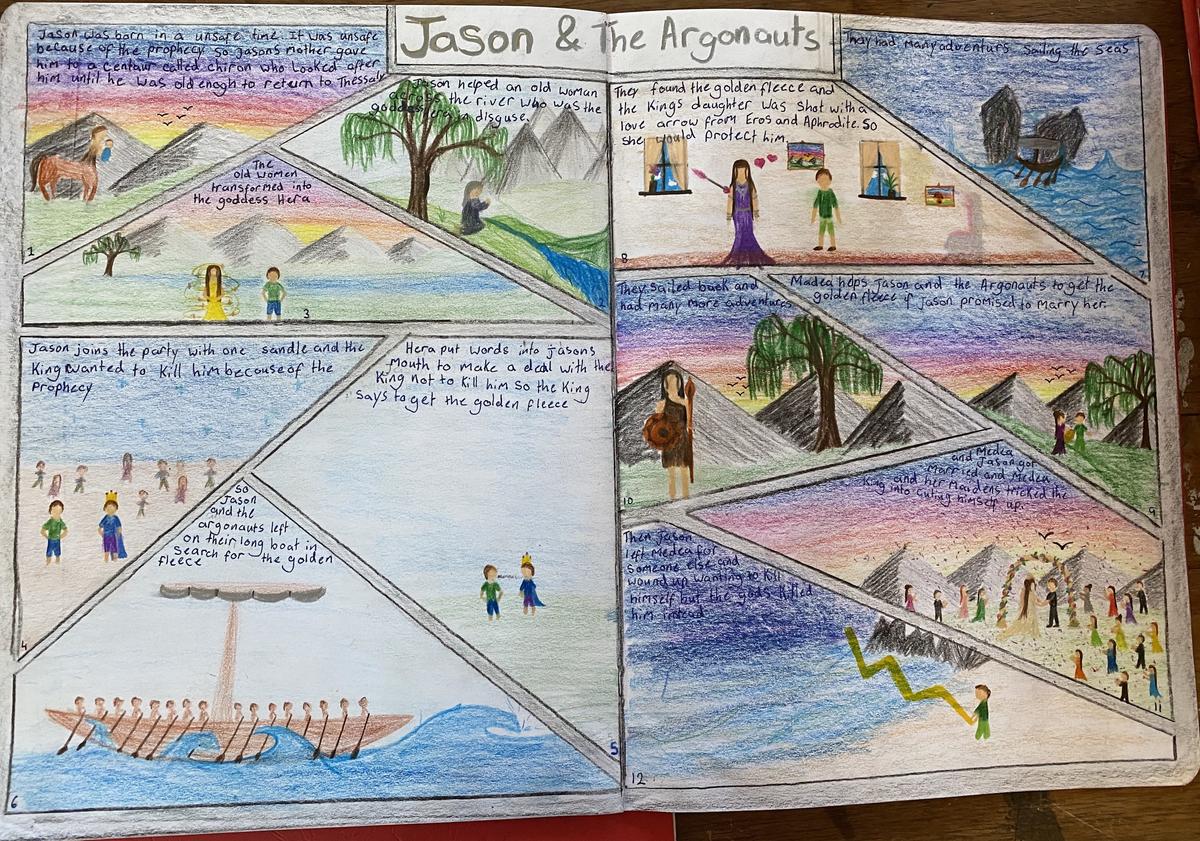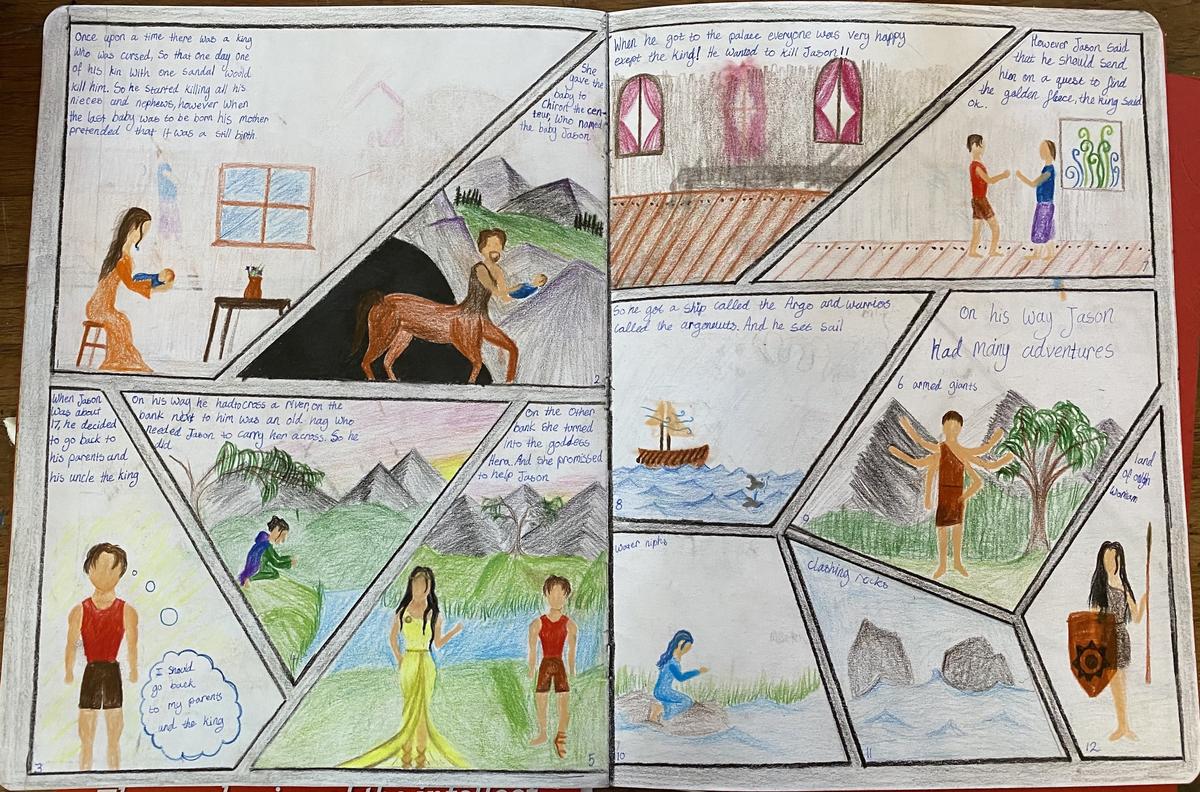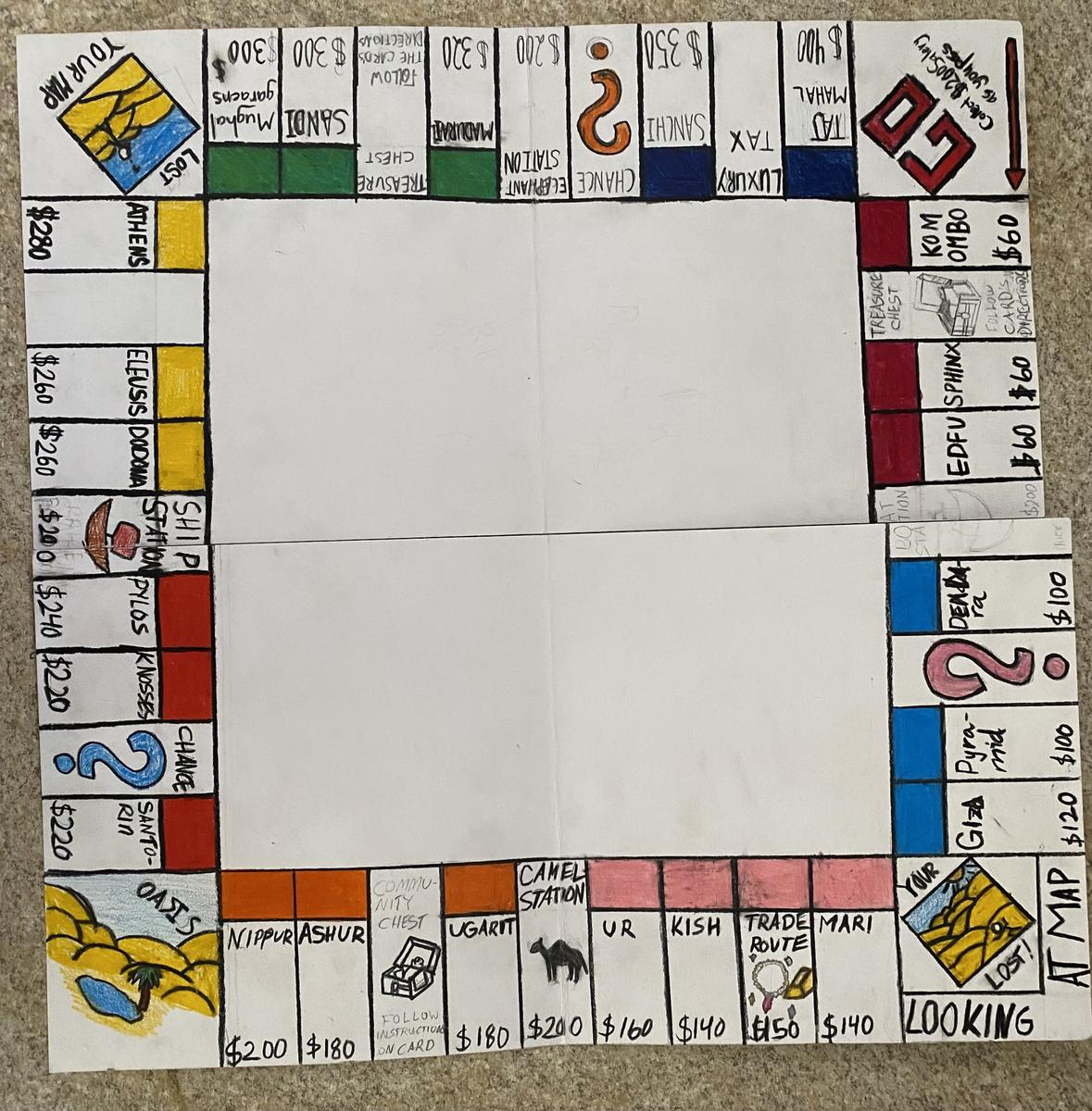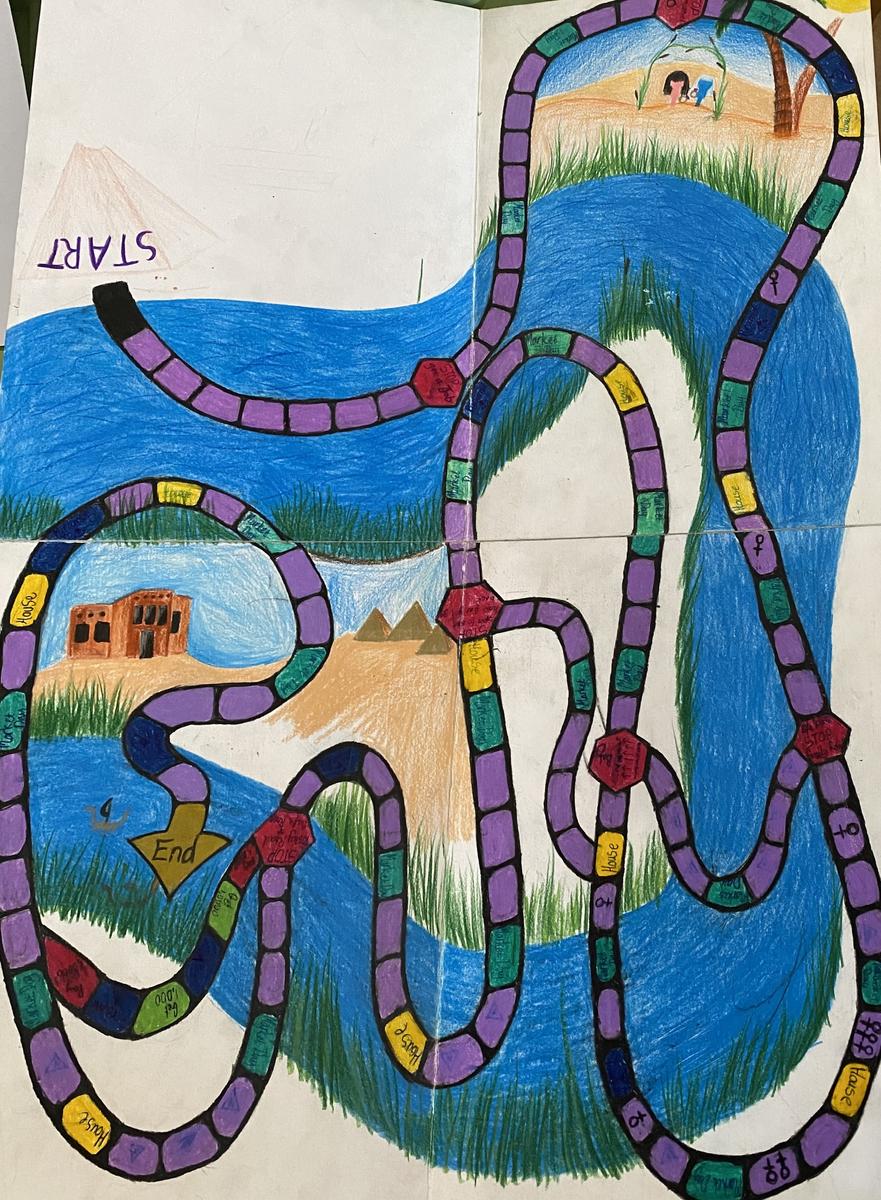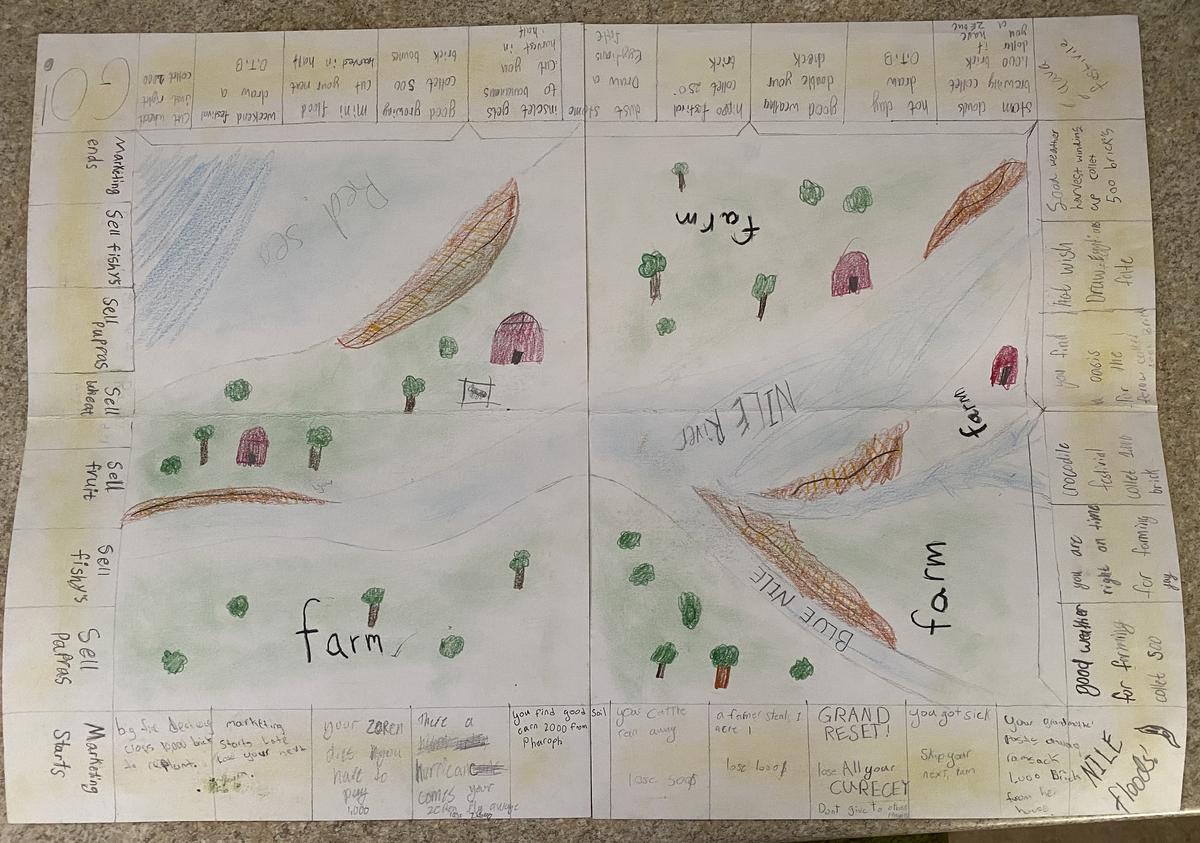Class 6 News
PAMELA KEIL

Class 6 News
PAMELA KEIL
Class Six is facing the big challenge of studying ancient cultures: How do you imagine in detail what it is like to actually live there! What is your typical day? What do you see walking down the street? How do you grow food? Where do you go shopping, and what does it look like? What jobs do you have, and what do you do all day? How do you raise children, and how do they learn?
We entered our time machine using two methods that let us spend more time and go into more depth: graphic novels and board games.
We drew graphic novels as if we lived long ago and were telling stories to our friends about the adventures of Jason and his Argonauts seeking the Golden Fleece, the Fall of Troy as a result of the Trojan horse, and the life of Achilles who was dipped in the River Styx except for his heel. We drew the details for each scene as if we are describing everyday life: what everyone is doing, what the places look like, how the people are dressed, and the tools they use. Graphic novels are a great way to learn how to summarise a story in a sequence of panels, and visualise the details.
We are now transporting ourselves back to ancient Egypt and recreating our familiar board games such as the Game of Life, Monopoly, Ticket to Ride, and The Farming Game. We’re creating cards, rules and game tokens from that time. Soon we’ll be ready to play these games with our fellow ancient Egyptians! Games are also a great way to summarise the key parts of a culture.
These lessons lead us to our next step: writing from the point of view of a historical person. We started by hearing the story of Herodotus, the father of history, as told from his point of view-- beginning as a young child and living his everyday life in Ancient Greece.
